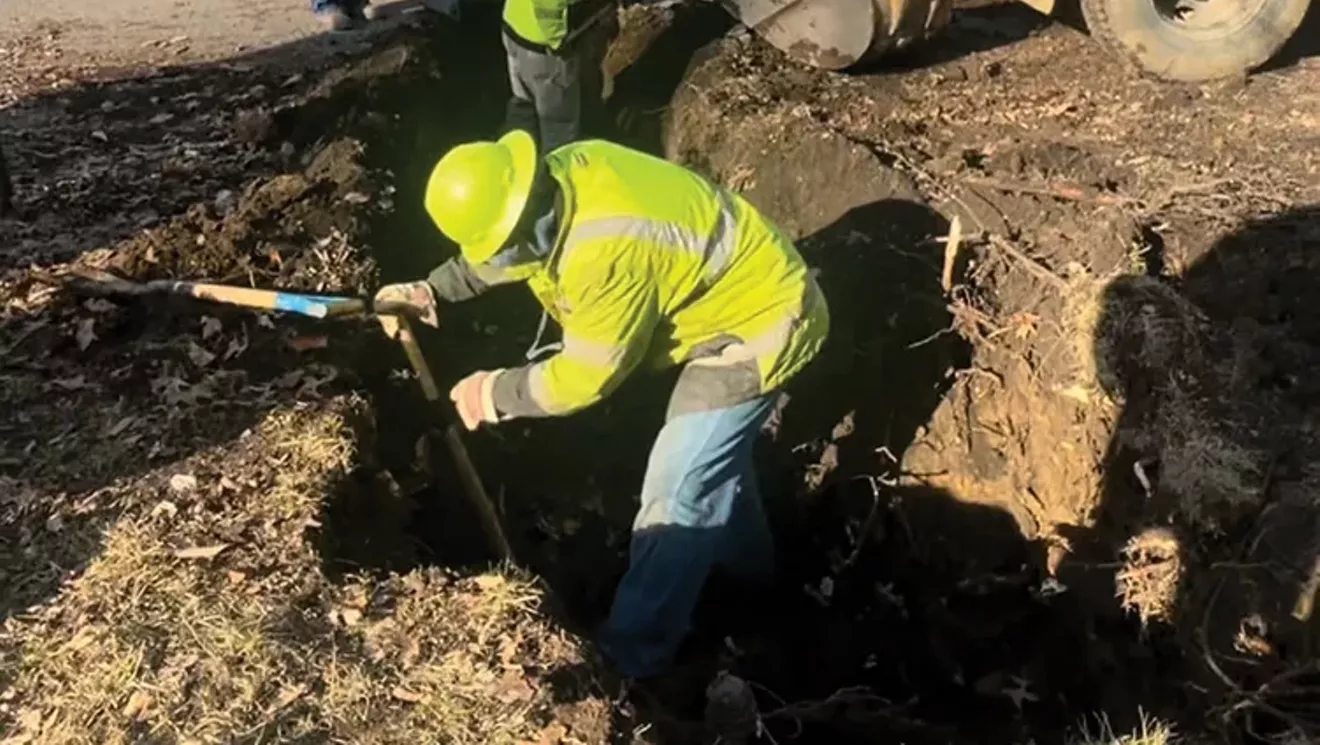
PHOTO CREDIT CWLP.
CWLP currently has one crew replacing lead service lines and hopes to add another in early 2026. Around 1,000 of the lead lines have been replaced out of approximately 10,000 citywide.
Springfield, like so many other metropolitan areas, has thousands of service lines connected to the city’s water mains that are made of lead. While those lines have a protective coating lining the interior of the pipes and are chemically tested twice a year, environmental organizations and the Environmental Protection Agency argued all lead pipes need to be replaced.
The EPA finalized a ruling for just that last year, though a challenge to its ruling was filed by a water utilities association one month after Donald Trump won the 2024 presidential election. American Water Works Association reasoned that the final rule’s timeline would be too tight to replace lead lines and too much of a cost for both municipalities and property owners.
“AWWA also supports the complete replacement of lead service lines nationwide – in their entirety – within the quickest feasible timeframe,” the court filing states. The organization “is seriously concerned about the ability of many water systems to comply with the rule’s timeline and requirements. AWWA is also concerned about the impact of the final rule on water affordability, particularly for households that struggle to pay for essential needs.”
Lee Zeldin, the EPA administrator appointed by Trump, asked the District of Columbia federal appeals court to put a hold on the case as the new administration reviewed the rule. The case hung in question for more than six months until last week, when the EPA and AWWA requested to move forward with the case in a joint motion.
It’s unclear whether the EPA intends to defend the 2024 rule, as Zeldin has slashed environmental protections previously regulated by the EPA and slowed research to the tune of laying off more than 1,000 scientists in his short tenure. The directives are part of a laundry list of Project 2025 proposals, generated by conservative think tank The Heritage Foundation, that the federal government has continued to adopt.
Three environmental groups, including Sierra Club and Natural Resources Defense Council, or NRDC, filed a motion to support the EPA’s lead service line ruling but the court has not yet acted on it. Jared Thompson, a NRDC lawyer, said the EPA’s position should be clear by December, when they’ll need to file a response to the AWWA.
The EPA is “moving ahead with defending the rule, but they also said something about a coming announcement in the next few months about practical implementation flexibilities and providing additional regulatory clarity or something like that,” Thompson said. “I just don’t know what they mean by that.”
Todd LaFountain, the water division manager for CWLP, told Illinois Times lead service lines should be replaced along timelines that make more sense for the municipalities that would be responsible for replacing the pipes.
“We’re all in agreement, both here in Springfield for sure and across the industry as a whole, that it’s time to remove the lead service lines from the ground – it’s time for the lead to go,” he said. “Currently, the funding sources are not there to do it in a responsible manner.”
LaFountain also chairs the Illinois chapter of AWWA, which he said is not involved with the ongoing court challenge.
In 2021, Illinois ushered in a new law mandating lead service line replacements over longer time periods than the 2024 EPA rule. Springfield, for example, still has nearly 30 years to replace its almost 10,000 lead lines in compliance with the Illinois law.
LaFountain told the Springfield City Council in June that the city’s lead lines are not a health risk. He also informed the council that roughly 1,000 lead service lines have already been replaced at the cost of $12 million. He said CWLP currently has one crew replacing service lines and hopes to add another crew around the start of 2026.
“We’re going to replace all the lead service lines, it’s just a matter of how fast can we do it,” he said, raising concerns about having the workforce to comply with the federal rule.
At that same City Council meeting, Ward 3 Ald. Roy Williams Jr. expressed concerns about how homeowners would be able to afford replacing their own lead lines, should the EPA rule hold up.
“It is a concern because, probably all of our wards, people just can’t afford it. And they won’t be able to afford it, unless the state, the feds or city, somebody’s got to help out,” Williams said.
LaFountain said implementing the EPA’s Lead and Copper Rule Improvements in Springfield would be the single largest capital project he’s ever managed, estimating costs between $150 million and $200 million.
“I don’t know that we can really move forward with any more detail than we provided here until we get a final court ruling on where that’s going to land,” LaFountain told the council.


